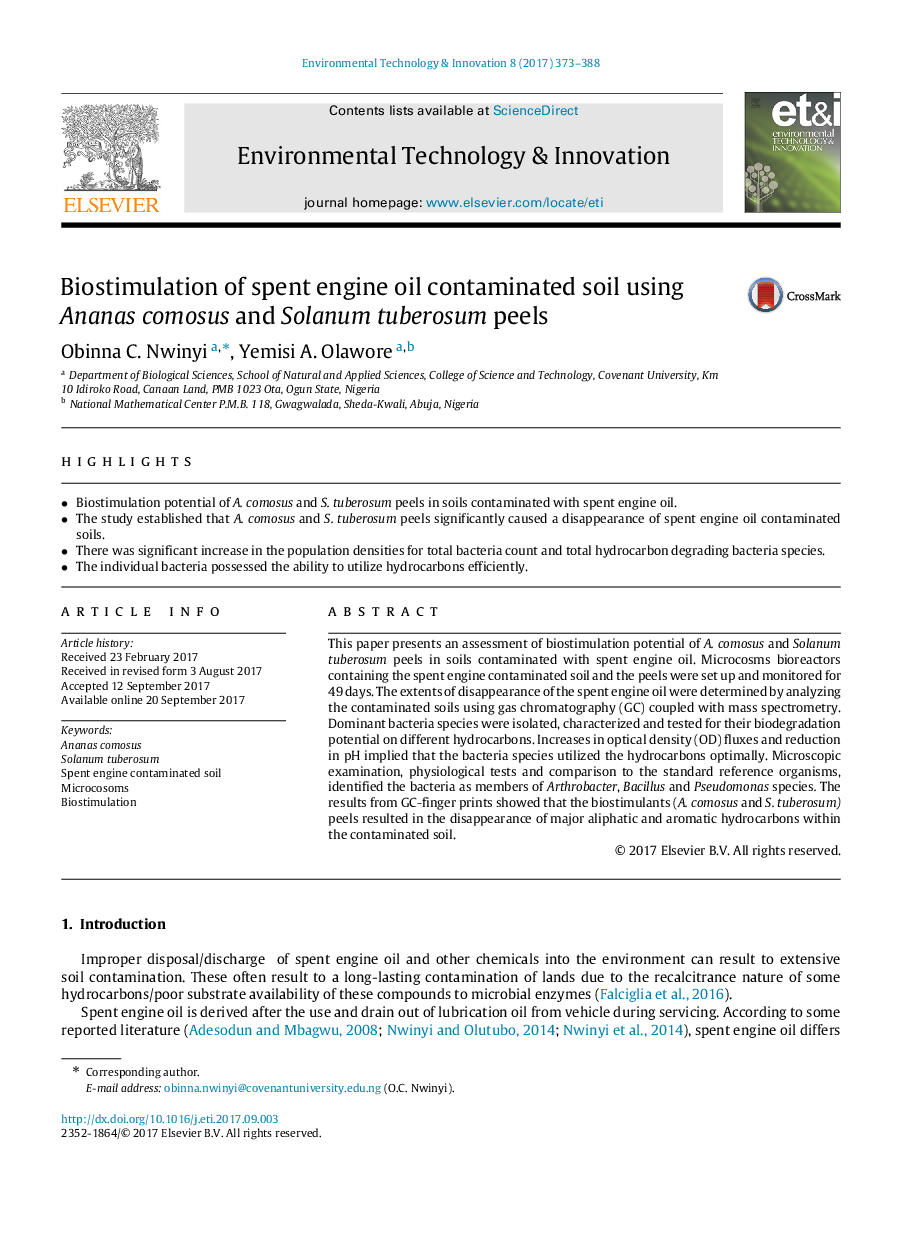| کد مقاله | کد نشریه | سال انتشار | مقاله انگلیسی | نسخه تمام متن |
|---|---|---|---|---|
| 5749619 | 1619280 | 2017 | 16 صفحه PDF | دانلود رایگان |

- Biostimulation potential of A. comosus and S. tuberosum peels in soils contaminated with spent engine oil.
- The study established that A. comosus and S. tuberosum peels significantly caused a disappearance of spent engine oil contaminated soils.
- There was significant increase in the population densities for total bacteria count and total hydrocarbon degrading bacteria species.
- The individual bacteria possessed the ability to utilize hydrocarbons efficiently.
This paper presents an assessment of biostimulation potential of A. comosus and Solanum tuberosum peels in soils contaminated with spent engine oil. Microcosms bioreactors containing the spent engine contaminated soil and the peels were set up and monitored for 49 days. The extents of disappearance of the spent engine oil were determined by analyzing the contaminated soils using gas chromatography (GC) coupled with mass spectrometry. Dominant bacteria species were isolated, characterized and tested for their biodegradation potential on different hydrocarbons. Increases in optical density (OD) fluxes and reduction in pH implied that the bacteria species utilized the hydrocarbons optimally. Microscopic examination, physiological tests and comparison to the standard reference organisms, identified the bacteria as members of Arthrobacter, Bacillus and Pseudomonas species. The results from GC-finger prints showed that the biostimulants (A. comosus and S. tuberosum) peels resulted in the disappearance of major aliphatic and aromatic hydrocarbons within the contaminated soil.
Journal: Environmental Technology & Innovation - Volume 8, November 2017, Pages 373-388